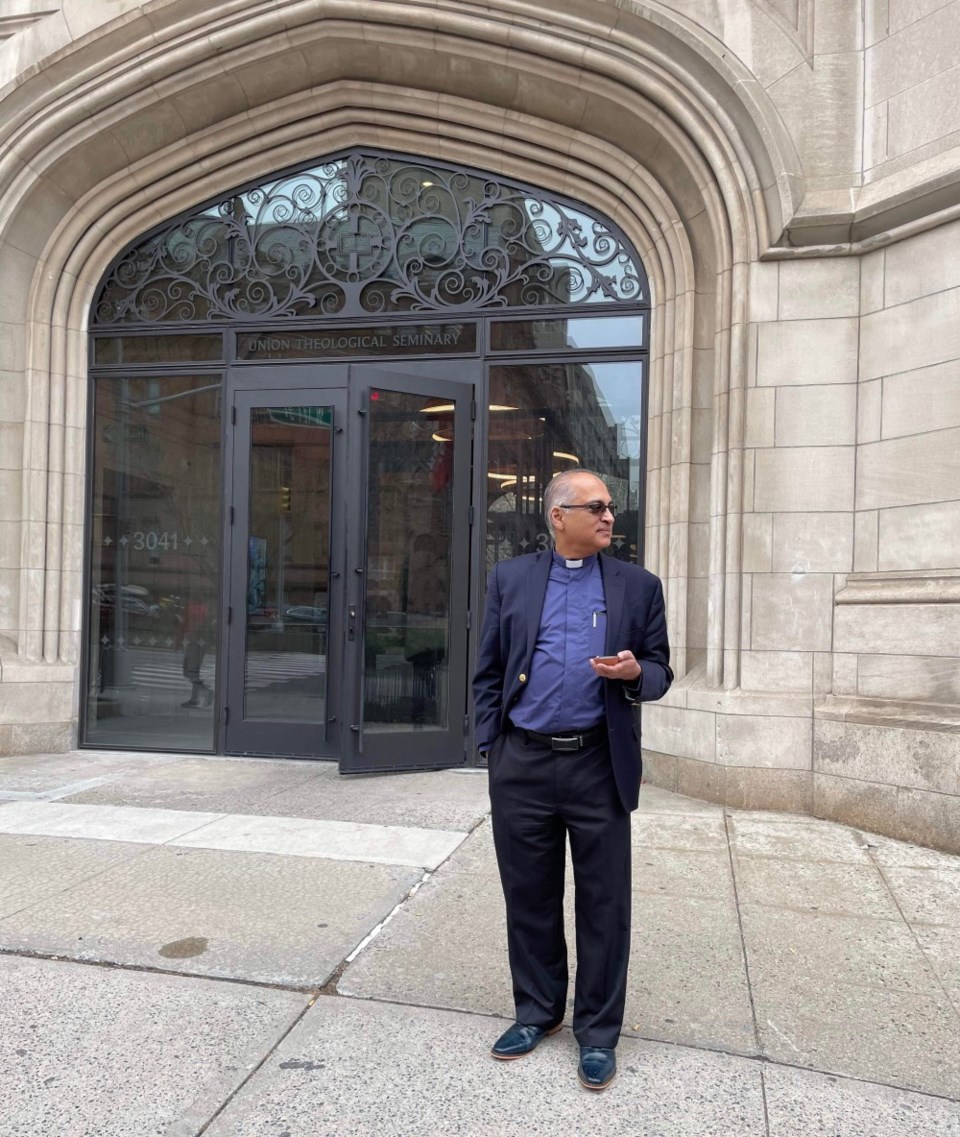Priests milling about on the streets—of Manhattan, no less. It’s an unusual sight. On Ash Wednesday (Feb 22nd), some Anglicans (in the US, they are called Episcopalians) take to distributing “Ashes to Go.” In Victoria, you might have seen priests on the steps of Christ Church Cathedral and elsewhere. In New York, I’ve spotted Bishops and priests outside the grand Cathedral of St. John the Divine as well as in more humdrum spaces such as by the subway stop outside Columbia University and 116th Street. Some might think of Manhattan as an irreligious space, but on Ash Wednesday, the holy appears right smack dab in the heart of the everyday.
For Christians, Ash Wednesday is meant to mark the beginning of forty days of soul-searching and repentance in preparation for the Resurrection of Christ. The logic of Lent suggests that before the new birth of Resurrection, there must be introspection and an invitation to spiritual discipline, growth, reconciliation and forgiveness.
Such spiritual transformation does not transpire through our strenuous effort alone. We change only when we are made to recognize that we have precious little time in which to make a difference. That is why the season begins with priests, Bishops, or laypersons doing a strange and intimate thing. On Ash Wednesday, they touch us kindly, look us squarely in the eye as they draw a sign of the cross on our foreheads, and say, “Remember that you are dust and to dust you shall return.” And countless people pause in the midst of their busy lives for this moment of gentle solemnity.
Who comes by on Manhattan streets? I am told by a priest friend that, quite often, she imposes ashes on nannies whose frantic schedules rule out midweek services. Others include passersby on their way to work or even to the hospital, folks going about the ordinary and the extraordinary business of daily life.
This was my first Ash Wednesday as a priest. My colleague, Sandra Montes, Dean of the Chapel at Union Theological Seminary, took me out into the streets to offer ashes to passing strangers who sought us out. She taught me the Spanish word for ashes—cenizas—and brought me across the street to Olive Street Deli. There, Claudia who sometimes makes me sandwiches, told Sandra in Spanish that she had been hoping to go to services but would not have time. She was grateful that I came by to impose ashes on her forehead.
I’ve always loved Ash Wednesday. It’s a holy day given to unsparing yet tender truth-telling. Too much religious life can be about pronouncing pious but unconvincing fictions. On Ash Wednesday, we are presented with the unvarnished truth that we will return to the earth from whence we came. After taking in that sobering wisdom, we are then invited to take up the necessary work of self-care and care for others.
Carrying Ashes to Go out into streets makes the whole business even more poignant. On Wednesday, I was reminded again that any spirituality that aspires to be authentic has to be lived out in the everyday, among the harried, the homeless and the hospital goers. If we cannot recognize the face of God on faces of those whom we encounter on the city streets, we are unlikely to find it in church sanctuaries. Genuine spirituality requires the capacity to recognize the sacred right in the middle of the mundane secular.
John J. Thatamanil is Professor of Theology and World Religions at Union Theological Seminary in the City of New York. He is also a Priest and Diocesan Theologian of the Diocese of Islands & Inlets (Anglican Diocese of British Columbia). He is, most recently, the author of Circling the Elephant: A Comparative Theology of Religious Diversity. He splits his time between living with his wife and son here in Victoria and living with his daughter in Manhattan. His research centers on how Christians can learn from the practices and insights of other religious traditions.



